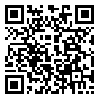BibTeX | RIS | EndNote | Medlars | ProCite | Reference Manager | RefWorks
Send citation to:
URL: http://rjms.iums.ac.ir/article-1-3421-en.html
Objective: Very low birth weight(VLBW) babies constitute
approximately 4%-7% of all live births and the mortality in this subgroup is
high, contributing to as much as 30% of early neonatal deaths. Some scoring system like the
Clinical Risk Index for Babies(CRIB) Score and the Score for Neonatal Acute
Physiology (SNAP), for assessing the risk of mortality frequently utilized in
newborns. The predictive value of CRIB (Clinical Risk Index for babies) for the
survival of very low birth weight neonates(VLBW) was determined.
Methods: In this cross-sectional study from 2002 to 2008,
the CRIB score was applied to all newborns (n=494) with a birth weight of
<1,500 g and gestational age <37 weeks. Predictive value of CRIB
(Clinical Risk Index for Babies) for mortality of neonates was determined and
compared with that of gestational age and birth weight.
Results: Four
hundred ninety four very low birth weight neonates were included in this study.
From those, 261 were expired giving a mortality rate of 52.5%. The mean CRIB
was 14.52 ± 2.4 (range: 7-25).Mean CRIB of expired neonates was significantly
higher than survivors (15.34 ± 2.6 vs. 13.5 ± 1.7 p<0.0001). In the
Receiver Operator Characteristic (ROC) analysis, the optimal cutoff point for
the CRIB score to identify neonates at the risk of mortality was 13 with 82%
sensitivity, specificity of 50%, positive predictive value of 65% and negative
predictive value of 72%. Sensitivity, specificity, positive and negative
predictive values of gestational age under 31 weeks for predicting mortality
were also 83%,63%,71% and 77%, respectively. In addition, sensitivity,
specificity, positive and negative predictive values of birth weight for
predicting mortality with the cutoff point of 1000 gr were 35% ,92%,84%, and
56%,respectively.
Conclusion: CRIB score can be used for identifying
neonates at risk of mortality and predicting the neonatal outcome. However, the
predictive value of CRIB is not higher than birth weight or gestational age.





